Graphics, Pixels, and the Art of Video Games
Video games as contributions to the world of art are highly contested and debated among gamers and non-gamers alike. As the author, I’m going to begin this piece with a short, first-person story to set the stage for the motivation, structuring and research behind this article. Then we’ll critically examine video games through the artistic lenses used to judge paintings, film, and other contributions to the world of art.
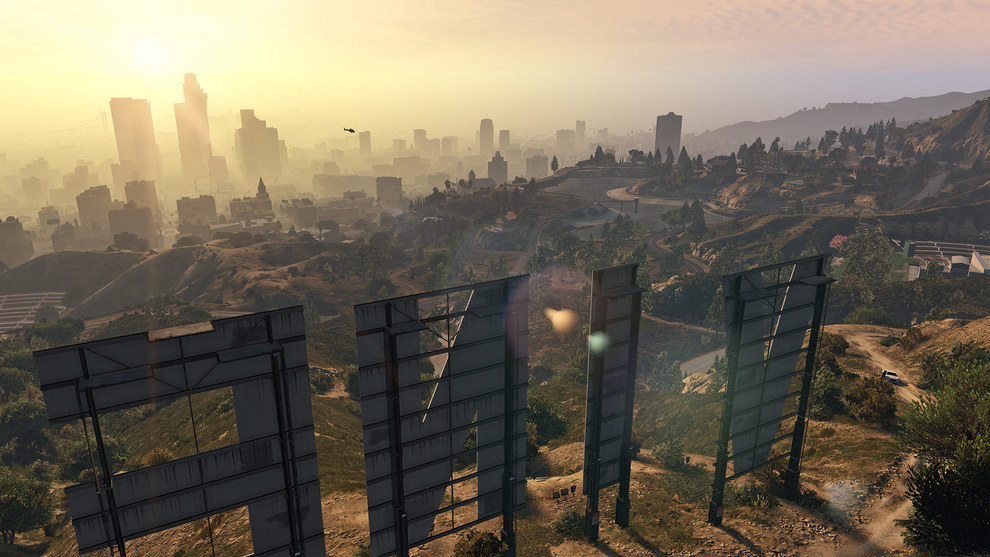
No one likes playing video games with me.
While my younger brother was excitedly bundled on the couch, anxious to watch me game through The Last of Us on PS4, I was forsaking the plot in favor of staring at the dust particles in the synthetic sunlight; the way the sun blinded me when I looked right into it; the tears in the abandoned furniture; and the gentle sway of the animated grasses.
The poor kid could only nag me to continue the story so many times before giving it up as hopeless, and abandoning me to my observational endeavors.
I can spend–and have spent– hours admiring the artistic minutia within a video game universe, continuously gobsmacked by its stunning audiovisual qualities. My awe is to the credit of new and powerful game engines, allowing for highly configurable workflows and runtimes, covering all aspects of development from audio, animation, cinematics, scripting, artificial intelligence, physics, destruction, rendering and visual effects.
In trying to convert a non-gaming family member to my point of view, I fired up the console and loaded a save from Dragon Age: Inquisition. “Isn’t this incredible?!” I demanded, showing them the gorgeous backdrops, the extreme attentions to detail, and the real-time rendering. They sat politely on standby while I jumped into a cinematic cut scene, flailing my hands wildly all the while. “Isn’t this the most beautiful thing you’ve ever seen?! How can anyone say that video games are anything but a contribution to the world of art!”
With a disinterested smile, the family member shrugged and said “Something can be beautiful without being art.”
Can it?
The conversation prompted me to plunge into the world of art theory, and I emerge well read and excited to share my in-your-face-my-family findings.
Let’s Talk About Beauty
Before we get into art, let’s talk about Beauty.
Philosopher and Historian Peter Gay helps us to understand beauty’s controversial definition when he writes:
“There is no definition of beauty that can be said to have met with universal acceptance. – ‘among the ancients, the fundamental theory of the beautiful was connected with the notions of rhythm, symmetry, harmony of parts, general unity. We may understand it most clearly in its contrast to the ugly. Beauty should give pleasure. Its characteristic in as far as expressed for sense-perception or for imagination can be purely metaphysical or psychological, but also connect with elements of presentation and elements of enjoyment.”
Gay’s definition is easy to agree with as it’s inherently subjective. The visual appeal of video games is immensely pleasurable to your average gamer, conjuring an abundance of enjoyment. A typical non-gamer might not agree to the thrill and indulgence, but is it the audiovisual that they aren’t enjoying, or simply turned off by the fact that it’s a video game? An intellectual roadblock may inhibit the non-gamer’s capacity for appreciation.
Objectively, rhythm, symmetry, harmony of parts and general unity can be scientifically calculated, if not intrinsically felt. Mathematical equations and golden ratios put numbers to our attractions, calibrating what we already feel. If the Slavic folk art, expansive wilderness, and exhilarating cinematics of Witcher 3: Wild Hunt repeatedly conform to measurable standards for beauty, how do we decide whether or not that beauty is art?
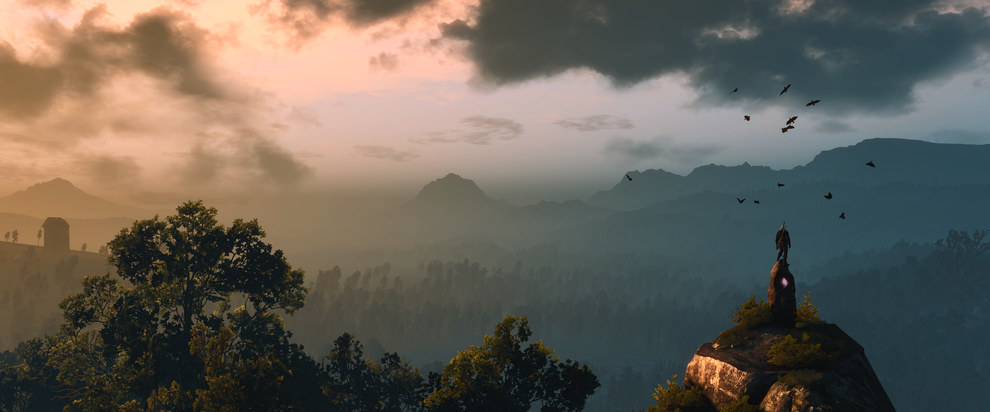
Everyone’s a Critic
The criteria by which a classic painting or piece is normally judged is: (1) whether or not it is finely crafted, (2) original, (3) beautiful, and (4) requires great skill. While many video games immediately check all four of those boxes, the aforementioned criteria is for a traditional painting, not your state-of-the-art RPG.
While Harry Potter paintings may move and talk, our less magical world more may draw more parallels between video games and film regarding the conversation about art.
In their 2013 article “Observations on Film Art”, Kristin Thompson and David Bordwell explain, “[Film is] Not necessarily high art. Cinema is often a popular art, or in Noël Carroll’s phrase, a mass art. From this angle, there’s no split between art and entertainment.” They go on to say film is, however, “photographic, narrative, performing, pictorial, and audiovisual art.”
Why can’t film be high art?
David Thomson tries to address this with his critique in The Whole Equation, “As viewers, are we watching heightened things—great danger, great desirability, intense loveliness—without being tied by the responsibilities that attach to real onlookers? We are,” he suggests “like voyeurs, spies, or peeping toms.” In requiring a passive audience, film is unable to fully engage.
Texts awaken, so the argument goes, while images stultify.
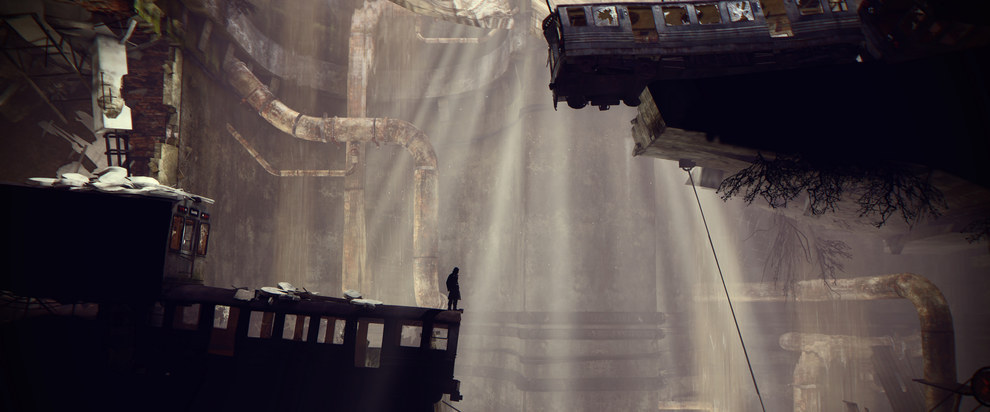
When Art Comes To Life
In the same way cinema fails to sore, video games truly shine. Reflected in much art, we see a need for some sort of enchantment or mysticism. You can be enthralled in that wonder in of cinema, and long for it that wonder when viewing a painting, but you live it when you engage as the user in playing a video game.
American essayist Elaine Scarry has written at length about art and aesthetics. Scarry focuses on the problem of emptiness in so much of the beauty we see around us in her work On Beauty and Being Just.
“It sometimes seems that a special problem arises for beauty once the real of the sacred is no longer believe in or aspired to. If a beautiful girl, or small bird, or glass vase, or a poem, or a tree has the metaphysical in behind it, that realm verifies the weight and attention we confer on the girl, bird, vase, poem, tree. But if the metaphysical real has vanished, one may feel bereft not only because of the giant deficit left by that vacant realm but because the girl, the bird, the case, the book now seem unable in their solitude to justify or account for the weight of their own beauty. If each calls out for attention that has no destination beyond itself, each seems self-centered, too fragile to support the gravity of our immense regard… But beautiful things always carry greetings from other worlds within them.”
In an intensely researched, well-written, flushed-out video game universe, we’re given the unique ability to understand the beckoning of its unearthly realm. The other-worldliness of its beauty is answered with a straightforward: it is another world! The artistic beauty we see in video games thrives from a developed, populated, thoughtful, intensely personal universe.
The ache for the extraterrestrial is planted in a painting, explored in literature, shown in film, and directly experienced and gratified through the interactive medium of video games.
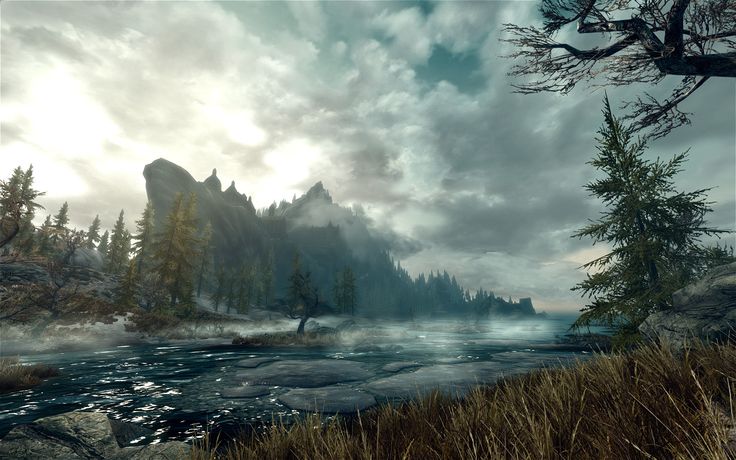
Video Games: Art’s Evolution
In June of 2011, the US Supreme Court ruled that video games should be considered an art form, as deserving of First Amendment safeguards as “the protected books, plays and movies that preceded them.”
For decades, video games have enthralled and inspired, and in 2012 they were the subject of a Smithsonian exhibit that viewed them as serious works of art. Chris Melissinos was the guest curator of “The Art of Video Games,” an exhibition at the Smithsonian American Art Museum that celebrated 40 years of the genre, from Pac-Man to Minecraft.
In defending video games place in the world of art, Melissinos wrote, “They’re the only medium that allows for personalizing the artistic experience while still retaining the authority of the artist.” He goes on to say:
In video games we find three distinct voices: the creator, the game, and the player. Those who play a game are following the story of the author and are bound by the constructs of the rules—but based on the choices they make, the experience can be completely personal. If you can observe the work of another and find in it personal connection, then art has been achieved.
Video Games are the next step in explaining our understanding of the world, our impression of the supernatural, our explanation of self and of each other. Games are able to transport us in a stunning, original, unique and individualized way.
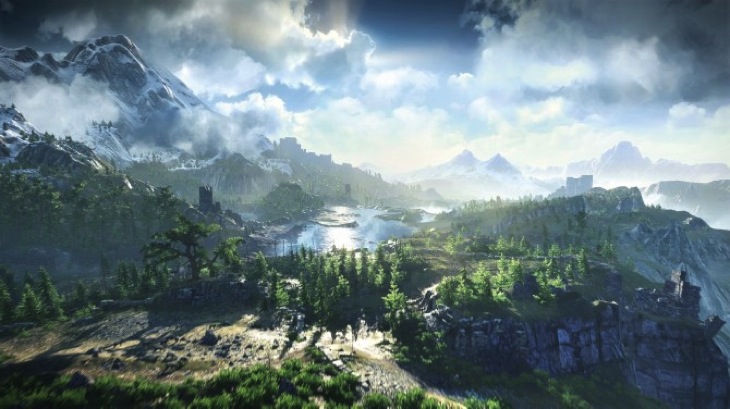
Point for the Gamers
Can something be beautiful without being art? Perhaps. But with the weight of worlds behind it, expanding on the limitations of cinema, and the bounding beyond traditional paintings and textiles, these games are crowned victorious as both beautiful and as contributions to the world of art. It’s high time society gave games the artistic recognition they deserve.
Works Cited
Bordwell, David, and Kristin Thompson. “Observations on Film Art.” Pbservations on Film Art. Website on Cinema. N.d. Web. 23 June 2016.
Gay, Peter. Modernism: The Lure of Heresy. W. W. Norton & Company, 2010. accessed November 2, 2013. pg 4-9
Scarry, Elaine. On Beauty and Being Just. Princeton, NJ: Princeton UP, 1999. Print. Pg 45
Scruton, Rodger. Why Beauty Matters. 2012. Documentary.
Thompson, David. The Whole Equation: A History of Hollywood. New York: Alfred A. Knopf, 2005. Print. Pg 157
What do you think? Leave a comment.




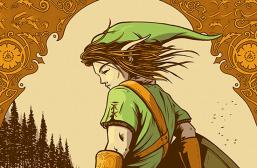


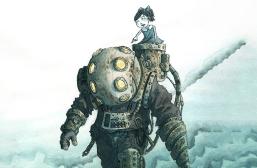



It’s the name, I think. “Games” – it was appropriate when scoring points was the sole objective, and still appropriate for titles that emulate sport, but a lot of what are called “games” have outgrown the word. Not in a pretentious way, simply in the sense that if not for the lineage, lots of mainstream games probably wouldn’t be described as such – if The Last Of Us had arrived, fully formed, without gaming history behind it, I doubt it would’ve been called a game, and I wonder if it would have been seen by highbrow critics as a revolutionary new form of story telling, rather than a waste of time?
Nice article, well argued and well written.
Computer games are made with love, passion and enthusiasm by teams of hard working people. They iterate and push boundaries to entertain, impress and amaze.
Games developers love making games and gamers love playing them. Nothing else matters.
play Dark Souls or Mass Effect and then tell me that video games aren’t art.
I’d be loath to use either game as an example.
Mass Effect in particular. ME’s writing is pretty poor by TV/film standards; the dialogue tree is everything that’s wrong with such games, becoming more about making sure you click on everything rather than think about what you say – after all, it’s made so bleeding obvious what the good/bad paths are 90% of the time that your dialogue choices matter. The Walking Dead is infinitely better at this side of things, and so many of the other games typically rolled out when the art debate is brought up make you wonder why dialogue is needed at all, let alone hour upon hour of meeting and then forgetting Tingtong of the Biddlybong and having their particular race’s sci-fi clichés spelt out to you JUST IN CASE there’s a bit of in-game money to be made.
If you think those games are great you should really try some others! You’ll have your mind blown.
I adore both those games but they’re hardly at the very forefront of artistic endevour in the medium (well Dark Souls you can make a case for).
Good article. I don’t like the notion that videogames require more acceptance from mainstream art critics.
This is our time! We have mega blockbuster games that make more money than most movies. We have indie darlings, we have one man games and we have Minecraft/Indie games that bring people together and allow unmatched creativity.
If they don’t see the value then it’s their loss.
Piper,
It is funny that there’s so much I agree with in your article, and yet I remain unconvinced, or at the very least skeptical, about video games’ place in the world of art.
I agree with your saying that games, if they are to be considered art, should strive to be aesthetically pleasing, which is to say that they should be held to standards. Moreover, the fact that they sometimes take years to make and require storyboards, concept art, and hours of rendering and design means that there is certainly a craft to video games. Above all, I’m with you completely when you say that video games are truly unique in the realm of audio/visual media because of their interactivity.
Yet I wouldn’t call them art, and strangely enough, I wouldn’t call them art for the reasons that you lay out in your article.
First off, games have found their stride in a time when the idea of subjectively good art has taken sway (an idea I personally disagree with). Because of this, there is a broad range of games, as Queenie in the comments above said; there’s RPGs, indie games, FPSs and so forth and so on. This is fine, and people should be free to make whatever games they want. The only problem to me in this regard is that there’s no standard for what makes an aesthetically good game. For example, a little while ago I played “Papers, Please” and found it to be one of the most stimulating games I’d played in a while. In essence, it was a finely crafted memory puzzle with stakes on the line. And yet the graphics range from incredibly silly to very bad (at least to me). They are nowhere near as good as the graphics from any Naughty Dog or Rockstar game, and yet it was ultimately more fun than most games from either of those developers. Does that mean that there should be two sets of standards, one for gameplay and one for design? Art, to me, is either good or bad, it’s that simple (though there are certainly standards that determine if any given work is good or bad). Video games have many more factors to consider their value, and some of them don’t really have to do with art (e.g. entertainment value).
Secondly, whilst I certainly appreciate the time and effort it takes into making a game (from the scripting, audio design, and game design) I’m simply unconvinced that the time and effort they take can be compared to other artists. Rockstar Games employs anywhere from 51 to 200 folks at any given time; Naughty Dog is smaller, employing anywhere from 1 to 50 folks, but they’re owned by Sony Playstation, which employs between 1,000 to 5,000, some of which helped sponsor and produce games like “The Last of Us” (I got all my info from http://www.glassdoor.com). Beethoven wrote his ninth symphony by himself and conducted it as he was going deaf. Michelangelo sculpted the Pieta and painted the Sistine Chapel by himself using the most humble of tools. I fully concede that this is the most personal point on my list and can be debated (which I invite), but I cannot shake the sheer amazement I feel when realizing that all three of the aforementioned works were fashioned by solitary efforts and yet are so majestic in nature. I do not think a single person could make a game that comes as close to being as impressive as that symphony, that sculpture, or that ceiling (there are lone designers who have made good games like “Papers, Please”, but as I said, I don’t consider that game aesthetically pleasing).
Lastly, and most interestingly, games’ interactivity is perhaps what most keeps me from considering games art. Art, to my mind, is not meant to be interactive. The viewer is meant to respond to it, talk about it, think it over if they wish, but they aren’t meant to manipulate it. I shudder to think of someone adding a few extra notes to the Ninth or chiseling even something as pleasing as a rose onto the Pieta; were any of that to happen, they would cease to be what they are, which means they’d cease being works of art. Games, however, are absolutely meant to be manipulated. The whole point of gaming is to learn the rules and bend them to your advantage so as to beat the game. How do you beat any of the pieces I mentioned before? They don’t provide a challenge. They don’t offer a set of rules. They simply are, and what they are is great.
Perhaps there is one thing about games that impresses me, and that is the zeal which they instill in their fans. You mentioned above that the sunlight in the loading screen for “The Last of Us” “blinded” you. That sun doesn’t even exist in a physical form; you could look at it for hours and nothing would’ve happened to you, yet I have no doubt that’s what the loading screen alone made you feel. That’s how impressive it was for you, and frankly, I admire that. The passion with which some people play games and others make them is true and bountiful, and while I disagree with your central idea and conclusion, I can see the love that went into writing this thought-provoking article.
Take care and thanks for your time,
August
Very persuasive. I think you have made your points and they must be accepted because you have argued your case beautifully.
The distinction whether something is high art, art or not is entirely political. In our culture, it is determined by money: how much did someone pay for it determines its cultural value (sadly). Video game art is better than 95% of the work you’ll see in contemporary galleries. There is no doubt in my mind that the modern day “masters” work in video games and comics/graphic novels.
Love it
Video games date very quickly and for the most part don’t classify as art. Gaming is constantly evolving. What looks great today, looks old tomorrow.
Do you think in 500 years, people will view most our games as art? No chance.
Art is timeless.
Modern art is timeless? Duchamp’s “Urinal” is timeless? Tracey Emin’s “My Bed” Is timeless?
Nah, it can be art and be present and be relevant for today’s society.
Art? Yes, of course! Good/bad art? It doesn’t matter – it’s still art.
Just because something is irrelevant to a particular era, it doesn’t mean it’s not appreciated. Take, for example, the paintings of our ancient royals and lords. I mean, they’re just pictures, right? It’s the medieval equivalent of Instagram, but heck, it’s art, because someone made it for a particular purpose.
There is more immersive art. Let’s take other paintings, for example. Let’s go to the romanticism era; the late 18th century and onwards. These days, to many people, the idea that nature > God/humankind is just a simple fact; very ordinary and run-of-the-mill. But at the time this sort of stuff was fucking groundbreaking. If someone recreated these pieces now, people might consider it bad art, but for its context it is great art.
So, with video games, the Call of Duty franchise won’t be considered ‘good’ art, but revolutionary titles that defined genres will be immortalised, just like your classic films like Metropolis. I mean, have you tried watching Metropolis? You need an open mind to enjoy it, but only a clever mind to appreciate it. It’s a masterpiece, but you won’t get away with that sort of film-making these days!
You say that, but some of the most beloved games of recent years (Papers, Please is a prime example) use ‘dated’ technology and could have been created decades ago. It’s like saying black and white films are dated and therefore not art. What difference does it make as long as you have a device to run it from?
I haven’t played games in years, before I was re-introduced into the world of contemporary gaming by a friend via the PS3. This opened an incredible world for me. I work for a pretty large collection of fine art, and I come from that academic background… he way art critics and parts of the establishment looks down on gaming as inferior/not art at all is pathetic.
The sheer amount of intriguing, clever, emotionally and visually complex projects (I’m not a big fan of the term ‘game’) coming out of the indie part of the industry is staggering, and you’d have to be blind to what art represents and represented all along to ignore such a trend. Already there are interesting discussions in magazines like Edge and more mainstream art pulications discussing the notion of what a game is and also recognition coming from universities and institutions like MOMA. We have people from David Cage to the studios Tale of Tales and thatgamecompany trying to redefine the notion of what constitutes a video game and coming up with some great ideas.
Excellent article, and thank you so much for writing it. You were saying a lot of things that i’ve been thinking for a while.
Nothing to add except excellent article and im so glad there’s an articulate voice bringing some meaningful insight to this debate.
Thank you so much!
I hate Art, I was shite at it. But I’m a good gamer and really love games, therefore games are not Art.
Video games may be beautiful, but they are not important. At all.
Things that are important are, for example, climate change, human rights, humanitarian crises in Africa, access to water, income inequality, government surveillance, child abuse, education, housing and employment, and so on.
I’ll leave that to the hard-hitting journalists. I don’t put my articles through the test of “will this make the world feel hopeless and change society” test.
But I’d urge you to consider that sometimes what’s important is that which makes people want to stay alive in this bleak and terrible world, and value is found in that which makes us smile.
I prefer my teenage years in the 80s where one single fire button on an atari style joysick was all you needed to play a game – but that viewpoint effectively disqualifies me from making any meaningful comment on todays games and whether they are “art”.
A very well argued piece.
I’ll put 20-40hrs into a good game and love the immersion that provides. It’s the same with a good book or a boxset of Game of Thrones/Breaking Bad.
The Legend of Zelda : The Windwaker is a beautiful piece of art, just load it up, sit back and get wrapped up in a beautifully realised world. (with added sailing.)
I think one of the main issues is the fact that there are no real programmes discussing games on tv. Most people get their information this way, but because of the lack of programming/discussion, websites, blogs, lets play videos etc sprung up to service those with an interest. It now means anything that would be made for TV looks out dated in comparison.
So, people interested in the medium are serviced, but little is done to change the perception of those outside the medium.
True in philosophy there’s still a big ongoing discussion about what art is and the answer is elusive, primarily because the idea of art itself isn’t as old as one might assume.
Fantastic stuff. Really well articulated. This is probably my favourite piece you have penned here Piper.
People have lost the ability to play not realising that play is a more life-affirming activity than the consumption of art is.
I think that, paradoxically, not being seen as art could potentially be the greatest endorsement of artistic merit currently possible.
Hats off to you sir.
Maybe art can never be really objectively judged by its contemporaries?
For me, a work of art is something that makes you detach yourself from reality for a moment and stand back to appreciate it. The best video games are an interconnected series of those moments – this is what makes them art, and also what makes them great.
The gaming industry often doesn’t help, by clinging to outdated tropes like lives and power ups, and clinging to stereotypes like the huge breasted female character, but there are good and bad examples of everything
I really love a lot of popular culture that does not fit my criterion of art.
Fantastic article.
Video games are helping turn art into reality
Great article. Part of the problem with the game as art debate, IMO, is that no simple term exists to distinguish between “pure fun” video games and those that strive to be something more. This is unlike other artistic media, e.g. there are comics and there are graphic novels, there are blockbuster movies and there are arthouse flicks, there are cartoons and there are animated films etc. It just doesn´t help the debate to have games like Call of Duty and Dear Esther to be sitting side by side in a single, catch-all “videogame” category.
Videogames, as a whole are still regarded in news peices as the playthings of young boys, when in fact there are a wide reaching, lucrative consumer entertainment product, (as literature and movies where before), which has the ability to not just entertain but inform and create in a way that no passive medium has ever managed.
The emergence of AR technology and things such as the Occulus Rift are going to change the way people consume not just entertainment, but reality in a way never before seen, and it’s leaving a lot of people bemused and unsure of what is happening.
At the risk of deviating from topic, I still find myself unconvinced of the premise that there is such a thing as “art” in the typical sense. We use “art” as a badge of honor, a barrier to entry that allows us to pick and choose what is to be included in this generally agreed upon canon of creative work. But when we deconstruct the term in articles such as these, it seems so often the term is as vague as it is relative. The qualifications to be considered art are so limited in scope and ingrained in tradition of what came before, that the term is detracting from creative possibility rather than adding to it.
Of course dictionaries aren’t scholars, but to give us a baseline definition of art: “the expression or application of human creative skill and imagination.” It is characterized by the act of creation. I would extrapolate then that my personal definition of art is “anything created with skill.” And that means anything. Who is to say the aerodynamic contours of an automobile, painstakingly crafted to allow the car to glide that extra mile per hour faster than it would without is not art? The intricate tumblers of a lock and key system, coming from centuries of development, tradition and rigorous complexity; is that not a form of art? Certainly we cannot put a Masterlock in an art gallery, but that is not what it is for; the brilliance of its design comes from its abstraction, that we do not need to understand it to use it. Why must we squabble over limitation and the tradition of “art” when creativity is omnipotent? The world has argued over the definition of the cart for centuries, while the horse is ready to die of old age.
Computer games have some breathtaking art in them, and some of the writers of storylines are fantastic (Even though most people just click through the quest text to get to the splatting mobs).
I always found video games to be an art form which offers something other kinds of art can’t: interaction.
I’m definitely on the side that video games are an art form, and I’ve had my own moments just like you where I lose myself admiring the details rather than pushing forward with the main objective.
This is a great piece. Very well written and thought through.
This is a beautiful piece that truly argues for the artistic worth of gaming series’. I have always appreciated the beauty and aesthetic value of gaming series, as well as the unbelievable aspects of realism you find in sports games, but I have never caught the “gaming bug.” Amongst all whom I know, I am alone in this category. Therefore, I am around a slew of gamers–all types of gamers. The screen captures from witcher 3 are surreal. Many of them–with the exception of 1–look like the place in which fantasies are born and people would only dream to escape to.
Another point–I commend you for strictly discussing the aesthetics within the games, and sticking to those points. You do not diverge from this topic, which creates a coherent and concise piece, illustrating the topic of aesthetics in gaming and discussing a subject matter that is usually one of the last concepts discussed in this critical of a manner. Nicely done, and absolutely beautiful graphics, placed intricately well, and with the perfect pixelations.
I do wonder if this boom period of gaming – some time after the 80s crash, probably late 90s to now – will last and establish itself as ubiquitous culture. I am 38 and for the last 2 decades I have always been ‘average gamer’ age. Mass appeal gaming on mobiles is huge but PS4 and XboxOne seem lacklustre affairs, as much about media as games and besides not being bought or desired as much as previous machines, don’t seem to occupy the zeitgeist at all. PC gaming thanks to Steam is enjoying a robust period, but Microsoft are launching an assault on that, that if successful will serve only to alienate and fragment the scene. VR although starting in the gaming space will find more uses and applications in the wider world.
Maybe the issue of games being recognised as a cultural cornerstone by older (and I think younger people) is that they have never really broken out of the enthusiast market.
Interesting analysis. I don’t play video games myself, but I respect those that do, and admire the medium from afar. Beauty, I believe, is something objective (though hard to pin down), and I therefore see no reason video games can’t be considered art. That being said, though, I think this is a question that will probably only be settled by the test of time.
I think that a lot people by now have accepted that videogames are art on the same level as movies, television, and books.
Those who haven’t are honestly behind the times.
Art is meant to be viewed in many different perspectives. No one work of art will be viewed the same by another person. Video games, while often depicting alternate universes, are meant to be seen the same by mass amounts of people so as to bring players together. Art may bring people together but not because they are playing in the same piece but because they can enjoy their differences. It is a very interesting argument and this is a great article. I, however, feel that video games could be considered art as long as it stays in its own category. Just as film, photography, and paintings are separate categories, why should video games be given special treatment?
Video games are certainly art in their own respect. Whether it be the beautiful realism of Uncharted 4, the 2-d retro look of axiom verge, or the high-contrast of Inside. Very well thought out analysis.
I have heard many times that good graphics do not make a good game, to which I whole heartedly agree, however I find it far easier to be immersed into a game if the environment matches the mood I want get from the game.
Graphics are a positive bonus for those who are looking to become fully immersed in a fantasy world. However, as someone who loves to read, I think that story is more important than art design. Don’t get me wrong, great visuals and art style help create the world, but there are a lot of games that are graphically and artistically amazing, yet feel empty.
Great work!